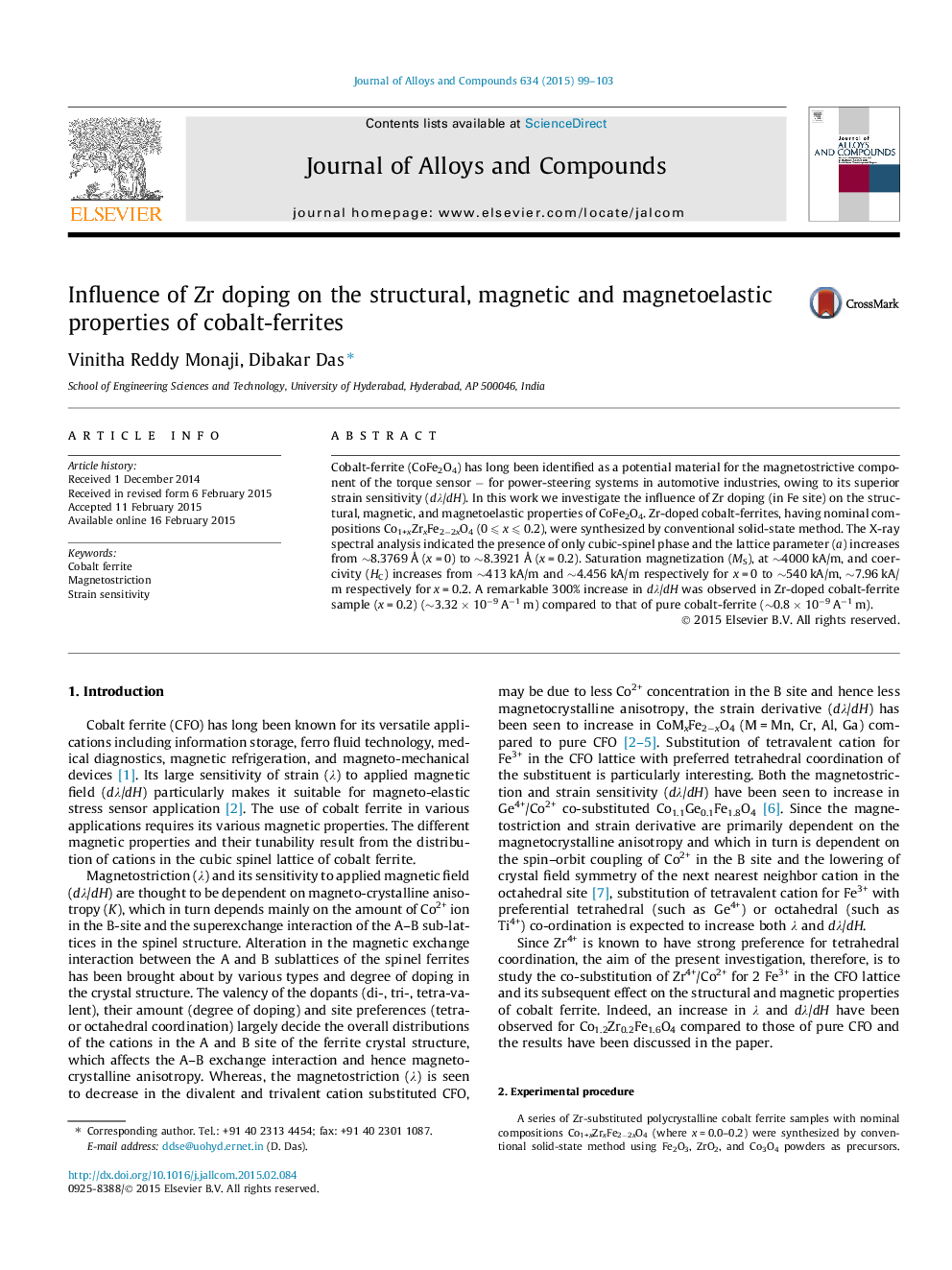| Article ID | Journal | Published Year | Pages | File Type |
|---|---|---|---|---|
| 1609648 | Journal of Alloys and Compounds | 2015 | 5 Pages |
•Co1+xZrxFe2−2xO4 samples synthesized by conventional solid-state method.•MS, HC increase with increasing Zr4+ substitution for Fe3+.•λmax ∼ 185 ppm achieved for x = 0.2 composition.•Maximum dλ/dH (∼3.32 × 10−9 A−1 m) is observed for x = 0.2 composition.•Field required to achieve (dλ/dH)max decreases with increasing Zr substitution.
Cobalt-ferrite (CoFe2O4) has long been identified as a potential material for the magnetostrictive component of the torque sensor − for power-steering systems in automotive industries, owing to its superior strain sensitivity (dλ/dH). In this work we investigate the influence of Zr doping (in Fe site) on the structural, magnetic, and magnetoelastic properties of CoFe2O4. Zr-doped cobalt-ferrites, having nominal compositions Co1+xZrxFe2−2xO4 (0 ⩽ x ⩽ 0.2), were synthesized by conventional solid-state method. The X-ray spectral analysis indicated the presence of only cubic-spinel phase and the lattice parameter (a) increases from ∼8.3769 Å (x = 0) to ∼8.3921 Å (x = 0.2). Saturation magnetization (MS), at ∼4000 kA/m, and coercivity (HC) increases from ∼413 kA/m and ∼4.456 kA/m respectively for x = 0 to ∼540 kA/m, ∼7.96 kA/m respectively for x = 0.2. A remarkable 300% increase in dλ/dH was observed in Zr-doped cobalt-ferrite sample (x = 0.2) (∼3.32 × 10−9 A−1 m) compared to that of pure cobalt-ferrite (∼0.8 × 10−9 A−1 m).
